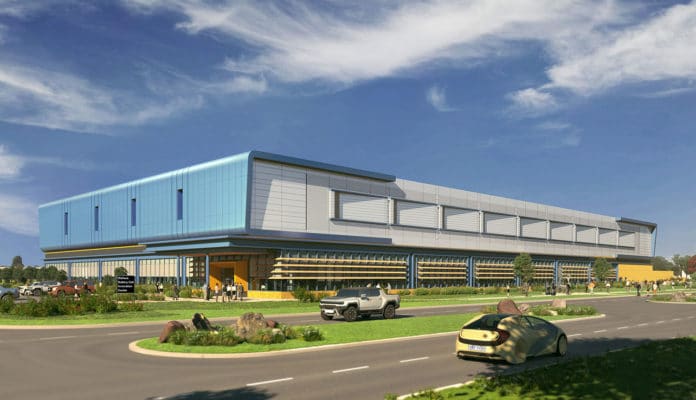General Motors (GM) is on its way to an all-electric future, with a commitment to make only electric vehicles by 2035. The American automaker has now announced that it is building a new 300,000-square-foot battery research facility in Michigan. Named the Wallace Battery Cell Innovation Center, the all-new facility will significantly expand the company’s battery technology operations and accelerate the development and commercialization of longer-range, more affordable electric vehicle batteries.
The Wallace Center will be located on GM’s Global Technical Center campus in Warren, Michigan. The new facility is named after Bill Wallace, the engineer who led the development of modern, first-wave electric vehicles (Chevrolet Volt and Bolt EV) at GM and prepared the corporation for a key deal with LG Chem to co-manufacturer the Ultium battery platform (on which, in particular, the electric SUV and the GMC Hummer EV pickup are built). Wallace died of cancer in 2018, and now they decided to give his name to the new battery center.
The Wallace Center will bring together all of the corporation’s battery developments in one place, which will allow it to manufacture batteries entirely in-house in the future. The sad experience with its all-electric Chevrolet Bolt cars, following a rare condition battery defect that caused several fire incidents, prompted the corporation to strengthen its own competence in battery development and accelerate the development of new generation batteries, like lithium-metal, silicon, and solid-state batteries.
The new batteries are expected to be 60% cheaper than those developed with LG Chem for the Ultium platform, with an energy density of up to 1200 watt-hours per liter. The battery breakthrough will help it build electric vehicles that can travel as much as 600 miles on a single charge – roughly twice the range of most EVs on the road today. The Wallace Center is crammed with the latest equipment for mixing electrolytes and making cathodes, anodes, binders, and housings from advanced materials.
The research center is to be commissioned in mid-2022, and the first prototypes of the new batteries are to be produced by the fourth quarter. The facility will work in conjunction with other GM battery development sites, including the Chemicals and Materials Research and Development Laboratory and the Estes Battery Systems Lab, which is the largest battery testing laboratory in North America with over 100,000 square feet.
The production of batteries developed at the Wallace Center can quickly be deployed at battery cell manufacturing plants, including GM’s joint ventures with LG Energy Solution in Lordstown, Ohio, and Spring Hill, Tennessee, and other undisclosed locations in the U.S.
“The Wallace Center will significantly ramp up development and production of our next-generation Ultium batteries and our ability to bring next-generation EV batteries to market,” said Doug Parks, GM executive vice president, Global Product Development, Purchasing and Supply Chain. “The addition of the Wallace Center is a massive expansion of our battery development operations and will be a key part of our plan to build cells that will be the basis of more affordable EVs with a longer range in the future.”
